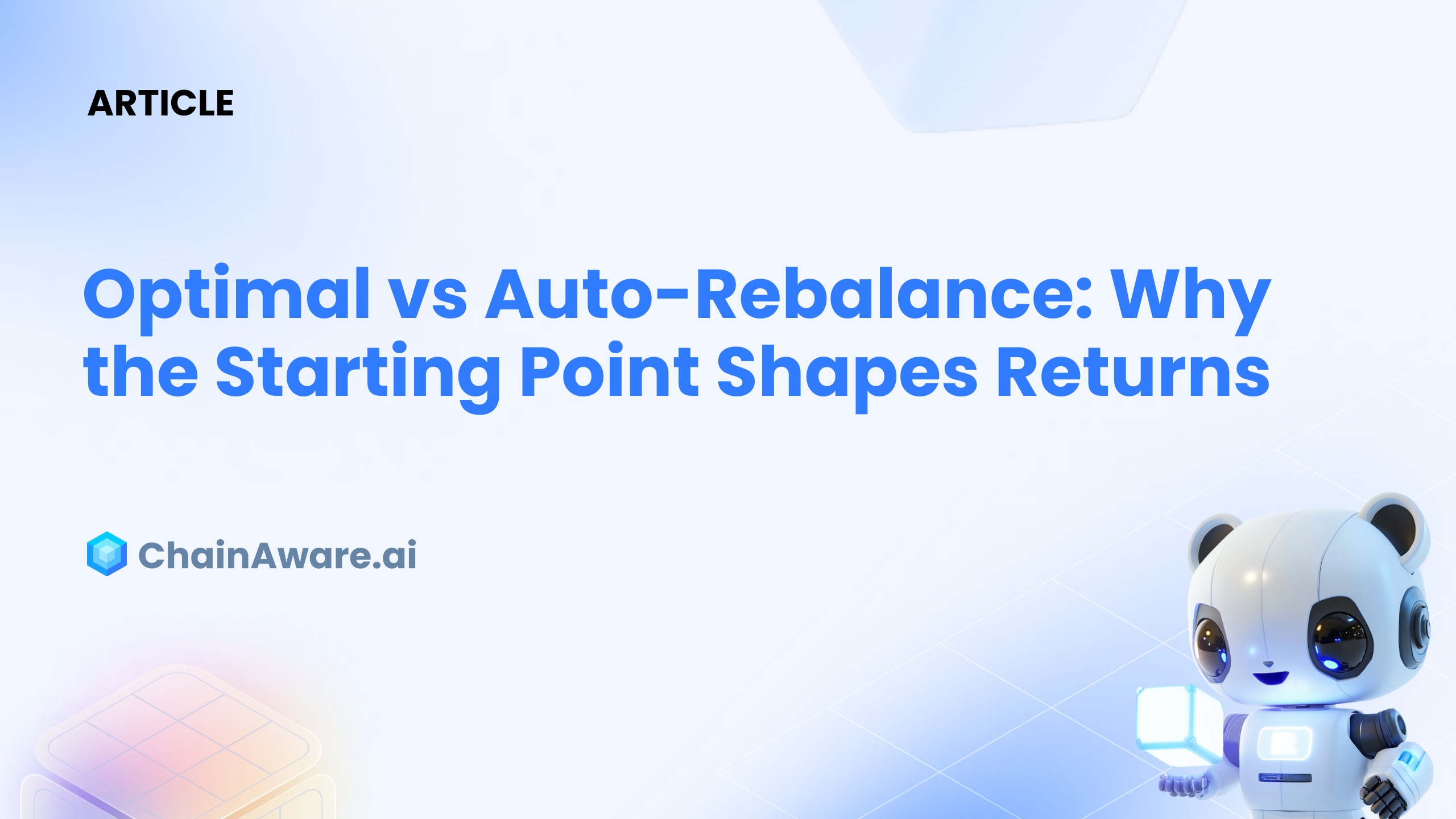When managing crypto investments, the initial portfolio allocation can dramatically influence future returns. Investors often debate between optimal initial allocations and automated rebalancing methods. Understanding the distinctions between these approaches can greatly affect portfolio performance.
Understanding Optimal Allocation
Optimal allocation involves determining the best possible mix of assets from the outset, leveraging mathematical models and advanced algorithms. It emphasizes achieving the highest possible risk-adjusted return right from the beginning.
ChainAware.ai’s Portfolio Construction MCP, for instance, exemplifies optimal allocation by leveraging AI-driven precision to calculate mathematically optimal portfolios instantly.
Advantages of Optimal Allocation
- Immediate Efficiency: Allocations are mathematically precise from the start, minimizing immediate inefficiencies.
- Lower Transaction Costs: Fewer adjustments are needed, significantly reducing trading costs.
- Enhanced Stability: Risk is proactively managed through initial precise diversification.
Auto-Rebalance Strategies Explained
Auto-rebalancing maintains a predetermined asset allocation by periodically adjusting the portfolio. As asset prices fluctuate, automatic adjustments restore the original balance.
Advantages of Auto-Rebalancing
- Consistent Risk Profile: Regular adjustments maintain a stable risk exposure.
- Disciplined Investing: Removes emotional decision-making, ensuring consistent adherence to investment strategies.
Why Initial Allocation Matters
The starting point significantly influences future returns due to compounding effects. An optimal initial allocation ensures that every adjustment made thereafter enhances, rather than corrects, the portfolio’s performance. Tools like Portfolio Construction MCP highlight this benefit clearly by minimizing necessary corrections and optimizing initial allocations.
Impact on Long-Term Performance
- Compounding Advantages: Optimal initial allocations compound benefits, maximizing growth.
- Reduced Need for Corrections: Less frequent and less significant adjustments improve overall returns.
Real-World Comparison: Optimal vs. Auto-Rebalance
Consider two portfolios starting with identical assets. The optimal portfolio, precisely allocated through systems such as Portfolio Construction MCP, requires minimal adjustments, leading to lower transaction costs and enhanced returns. Conversely, the auto-rebalance portfolio requires frequent corrections, increasing transaction costs and potentially eroding returns over time.
Choosing the Right Strategy
Selecting the appropriate strategy depends on investment goals, risk tolerance, and time horizon. Investors seeking to maximize long-term returns with reduced transaction costs typically benefit more from optimal initial allocations, like those facilitated by ChainAware.ai’s Portfolio Construction MCP.
Conclusion
While auto-rebalancing strategies offer simplicity and discipline, optimal initial allocations provide superior long-term performance and efficiency. Understanding how the starting allocation shapes returns—and leveraging advanced solutions such as ChainAware.ai’s Portfolio Construction MCP—can empower investors to make more informed, profitable investment decisions.







